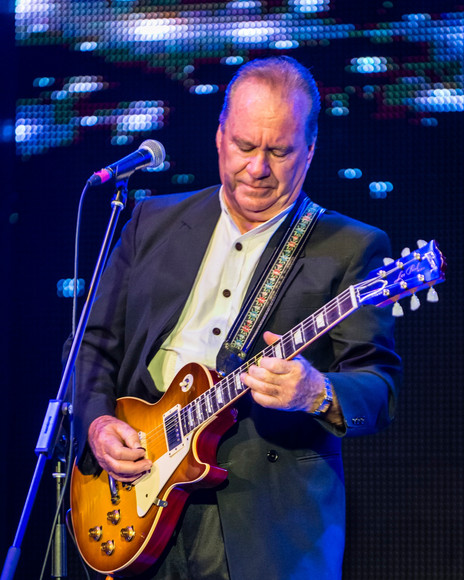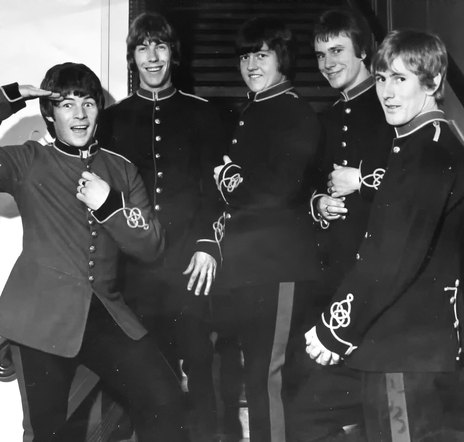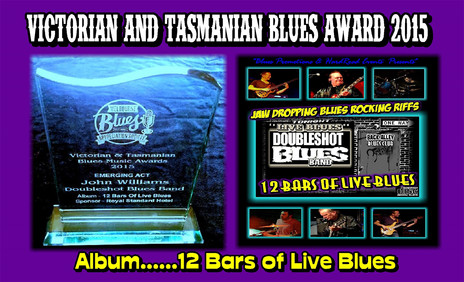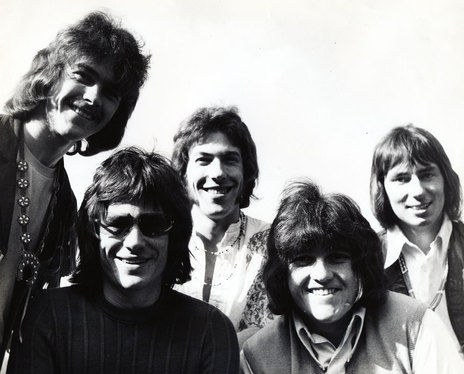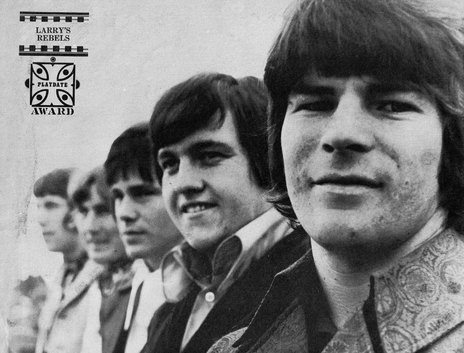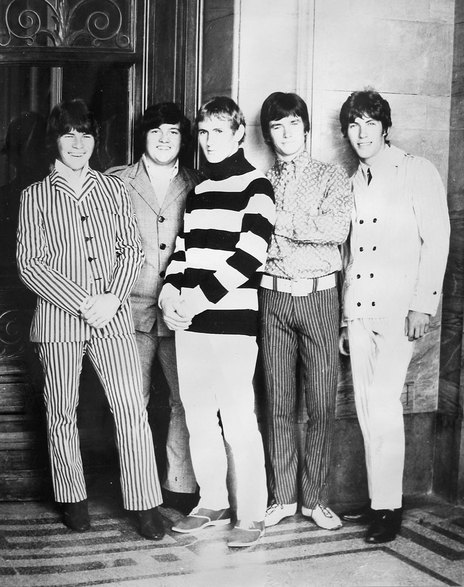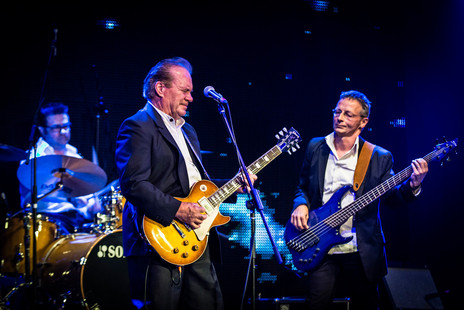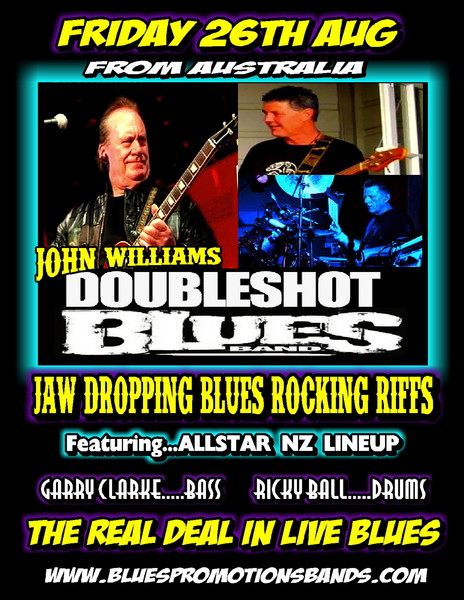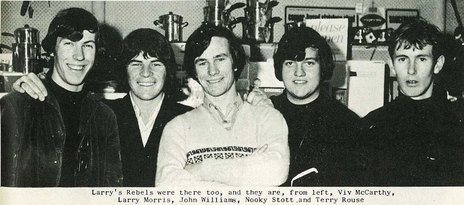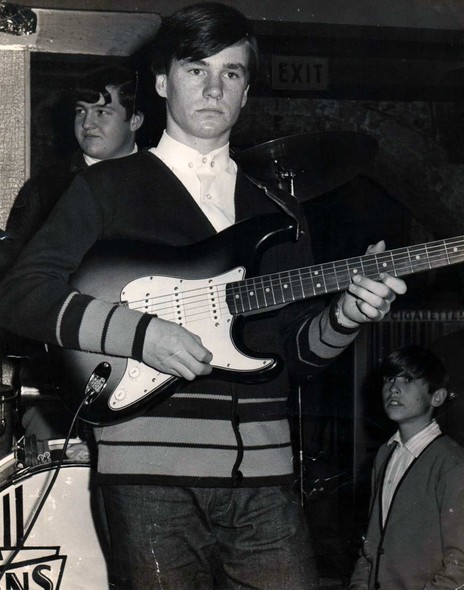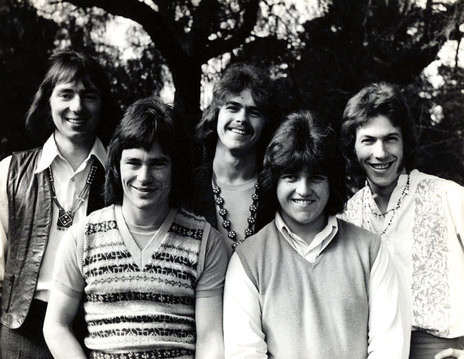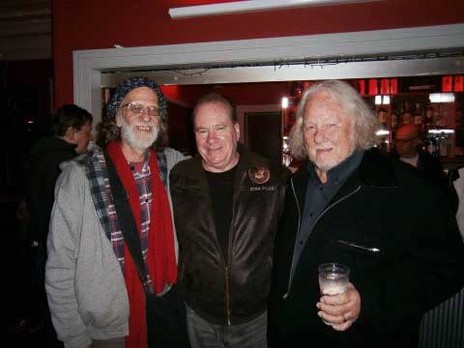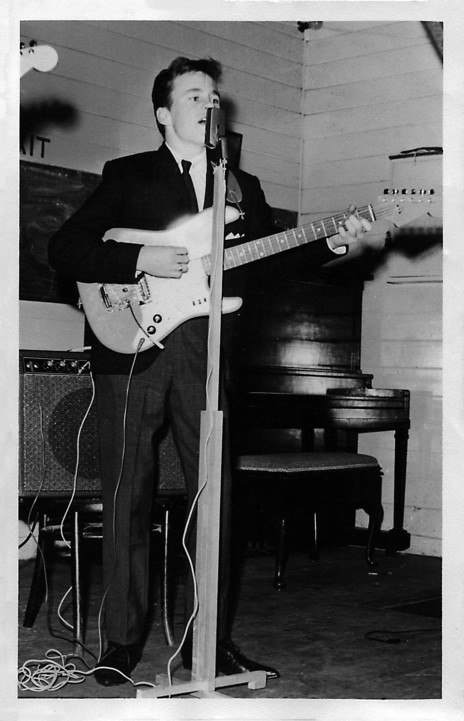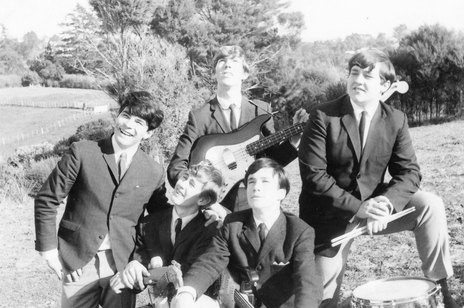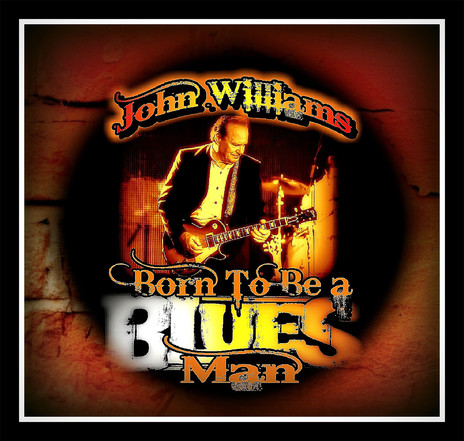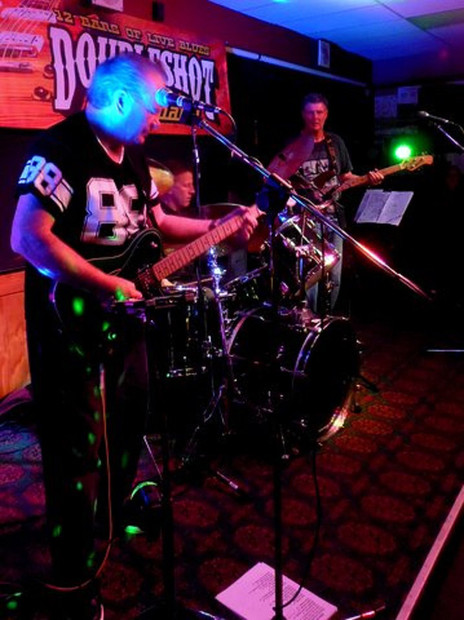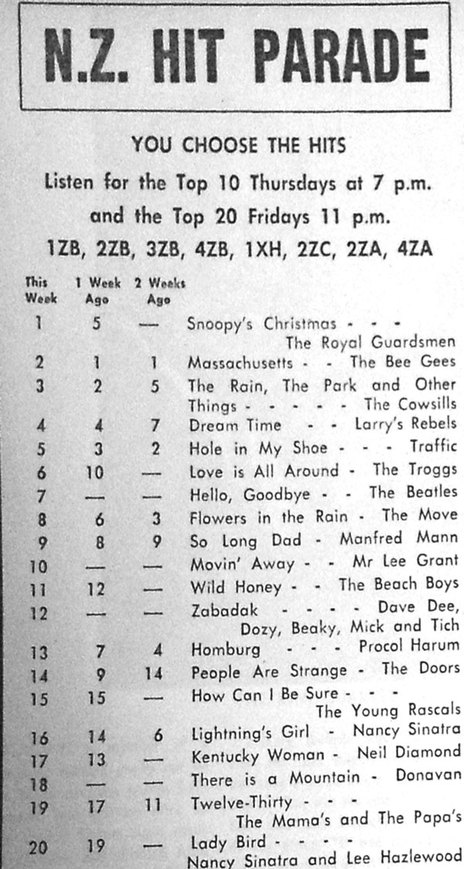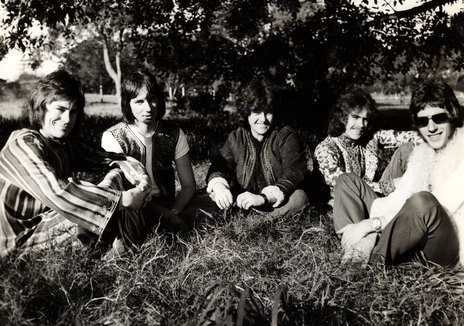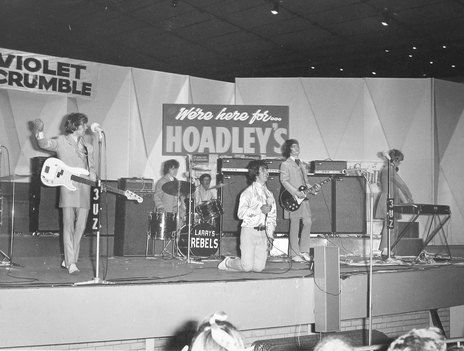Growing up, there wasn’t much music Williams liked on the radio, except for the weekly Lever Hit Parade on 1ZB, which he listened to on his crystal radio set. On clear nights he could occasionally pick up overseas stations broadcasting hipper pop music. But there was lots of music played at home, and he probably learnt most from his father, a drummer. On Saturday nights his father had some Pacific island friends over to the house to play music. There were guys playing guitars, someone with a tea-chest and his father on drums. Williams used to watch the musicians and just picked things up from them. His mother played piano, as did his sister Linda (later guitarist/vocalist in the all-girl Auckland band Fair Sect).
In 1962 at Seddon Tech, Williams decided to form a band, The Young Ones. With him at school was Harry Leki, later a member of the Wellington band The Simple Image. Leki was in. So was Terry Rouse. They had another drummer before Nooky (Dennis) Stott joined and a string of bass players traipsed through their ranks. They mostly played instrumentals such as Shadows tunes, but they wanted a lead singer to expand their repertoire. Their second manager, Russell Clark, recommended Larry Morris to the band. And it worked.
Many bass players later, Viv McCarthy joined Larry’s Rebels. This made the combination that everyone remembers: Williams (lead guitar), Nooky Stott (drums), Terry Rouse (guitar and keyboard), Larry Morris (vocals) and Viv McCarthy (bass guitar).
Their first regular bookings were at the Top 20. At the end of their gigs there, they charged along the street and across to the Platterack where they played upstairs in the after-midnight slot. Williams was in the fourth form that year, and got into strife with the Education Department. “I was late a lot. And there were times I didn’t go to school. I was far too tired. They gave me the ultimatum; you go to school or else.”
He got on well with Jimmy Page, who was very pleased John was able to stand side-stage and play lead on the first three songs.
During 1966 Larry’s Rebels moved to their next residency, at the Monaco Ballroom in Federal St. During this time, they also toured as support for Herman’s Hermits and Welsh singing sensation Tom Jones. Williams: “I think I had heart failure the first time I heard Tom Jones sing. Hearing a voice like that in that era was phenomenal. I remember standing at the side of the stage and hearing that ‘Thunderball’ voice …”
There were many tours supporting overseas artists, among them The Walker Brothers; Roy Orbison and The Yardbirds early in 1967. A few months later the Rebels were one of the supports for the Animals/Dave Dee, Dozy, Beaky, Mick and Tich/Paul and Barry Ryan tour. Because John was so young he needed a chaperone on these tours.
He got on well with Jimmy Page who, that night in Hamilton, was very pleased Williams was able to stand side-stage and play lead on the first three songs before he could come on to take over. Williams: “I used to sit at the back of the bus with him and play things. He showed me various riffs and things like that. That’s got a lot to do with my style these days: early British blues.”
The story about Page teaching Williams the riff that he and Morris then put into the song ‘Flying Scotsman’ is true. Williams noted the song was pretty ritzy, risky stuff – pretty wild at the time, especially as Larry’s Rebels were portrayed as a pop band. Williams: “I’m not embarrassed to listen to it now – it stands up today.”
The Animals also inspired Williams. “I liked Eric Burdon; liked the stuff they were doing. I was already getting into the blues.” The early Jeff Beck, Yardbirds, and Rolling Stones songs sparked Williams’s interest. But the John Mayall album Blues Breakers with Eric Clapton (often referred to as the Beano album) was key to Williams's emerging passion for the blues.
Morris and Williams wrote many songs for Larry’s Rebels. Their roles were clear, says Williams: “I used to come up with different ideas and I’d show them to him and he’d come up with the lyrics. Because we were putting out so many singles we were allowed to have an original on the B-side. Sometimes I think we worked at bit hard to come up with the B-side.”
Of the songs they penned, the strongly metaphoric ‘Dreamtime’ still stands out. It went to No.4 on the NZ Hit Parade in November 1967 and won Williams and Morris an APRA Silver Scroll. Australian music historian Glenn A Baker described it as a “magnificent pop single”.
In May 1967 the group crossed the Tasman and toured Australia as one of the supports for The Easybeats at a time when the Easys were big. The tour went well for Larry’s Rebels but when they got back to Melbourne they were on their own.
Williams: “We had to start all over even though we’d just done a national tour. We went through some very hard times in those early days. We used to live in the George Hotel in St Kilda. There was nobody living in the hotel. They just gave us half a dozen rooms and another room to practise in. It was a little daunting. I wasn’t even old enough to drink in the bar.”
While they were in Australia, Larry’s Rebels made a series of records but none charted. Lots changed: Terry left the band; Mal Logan joined; Larry left; Glyn Mason joined. Once Mason (ex-Roadrunners, ex-Bitter End, ex-Jigsaw) was in the mix, they were no longer a pop band. Very early in the time with Mason as lead singer the Rebels (as they had become) released ‘My Son John’. In March 1969 it went to No.1 on the NZ Hit Parade, where it stayed for two weeks.
The Rebels returned to Australia with Mason but lasted less than a year. After they broke up Williams received an outstanding offer. “Glenn Shorrock asked me to play in the new band with Brian Cadd, which was Axiom,” he recalls. “I got first choice on that one but I didn’t really want to do it because I was young. I didn’t have a lot of money. I needed to go into a working band, not a new band.”
He returned to Auckland where at first he played in Hamul with Evan Silva (ex-The Action) and Garry Clarke (ex-Challenge) before doing a very brief stint at Tabla with Bruno Lawrence. “It was very brief ’cos the Platters walked in the door and asked if I was available to come and tour with them. I didn’t know who they were and I didn’t know they were in town. So the next day I was off on tour with them. I had to put a band together.”
In the early 1970s, Williams was drawn back to Melbourne. For a while he worked with Leo de Castro in King Harvest; at the same time Garry Clarke was in the band. He also did some work with Max Merritt and with Trevor Young.
From the early 1980s, for 10 to 15 years, Williams ran a signwriting business. At school he had been good at art. “I could draw and play round with letters and did that from an early age. I used to draw caricatures.” But he didn’t abandon music, and often filled in with bands. He describes this time as building up to the blues band he now has.
Disaster hit in 2006. Williams fell off a ladder on to concrete, sustaining comminuted fractures (fractures where the bones are broken into more than two pieces) to his left elbow and left shoulder, plus significant damage to his brachial plexus (the major network of nerves at the base of the neck). The surgeon told him he would never use his left arm again then, just days after his discharge from hospital, he developed CRPS (a chronic regional pain syndrome). Typically this began with swelling, which for him was in his left hand. With no function in his left hand for 18 months after his fall, he began to think that the surgeon was right.
He had to learn how to play guitar again, starting from scratch.
Williams made a slide guitar and put it on the kitchen bench to play it. “I was never into it like I am now. My little finger was the only one that I could fit a decent bit of pipe on cos they were so swollen. And I had no movement in my arm. I used to stand at the bench and slide my arm just in case to get the thing going. I used to do that every day.” With treatment, buckets of dogged determination and enormous will power he began to get some function back in his left hand.
He learnt how to play guitar again, starting from scratch. Following the three years of intensive neurological rehabilitation, John now believes he is playing better than ever before.
In 2014 Williams formed Double Shot of Blues in Melbourne. There have been various line-up changes and the current band includes Michael Emmerling on bass. They play old fashioned blues – including re-worked classics such as ‘Hoochie Coochie Man’ but interpreted in a Double Shot way.
Half of Double Shot’s repertoire is original. Williams explains that it took a while to get originals songs that he really liked. “Once it’s there I put it into our set. If we do some of the blues classics, we don’t do them how they were or are. I take them apart and we do them the Double Shot way. That’s what the band’s all about.”
Double Shot recorded a live CD and DVD, 12 Bars Of Live Blues, over two nights at Melbourne’s Tramstop Bar in 2014 and won the 2015 Vic Tas Blues Music Award for an emerging act with this debut album. Not all they do is re-worked classics or originals. They also do what Williams describes as a real bluesy 10-minute version of ‘Bad Boy For Love’ – the fierce hard rock Rose Tattoo’s signature song. It sits well beside the classics as does the original ‘Highway 31’.
Williams also has a band of the same name in New Zealand: this one with Garry Clarke and Ricky Ball (ex-Hello Sailor and Ticket). He is determined to keep playing music: “I’m not going to stop until I can’t.”
